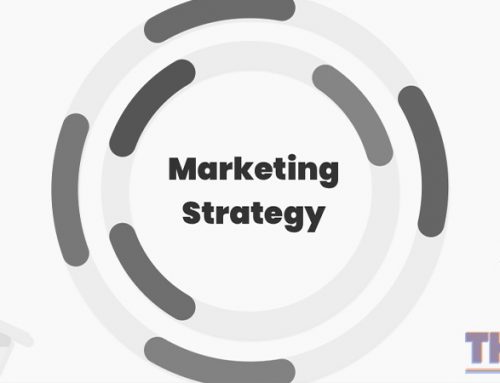Everyone can use quick tips to increase traffic. Below are 20 tips you can use on your own to begin to add more traffic to your website. These tips are things you can do monthly and make it a common practice to begin to grow your site. As time goes, your traffic graph will slowly build into the type of well visited site you have always wanted. Of course, Thinkit Media can help with many of these techniques if you don’t have the time to apply them. Maybe you can handle a good chunk but need someone like us to help with the other aspects. Click the tab on the right side of the page and send us your info! Back to the tips …
- Optimizing your website for search engines. This includes using keywords in your page titles, meta descriptions, and headings, as well as ensuring that your website is well-structured and easy to navigate. This will help Google understand what your website is about and improve its ranking in the search results.
- Creating high-quality, informative content. This means providing value to your audience and offering information or solutions to their problems. This can attract more visitors to your website, and also improve your credibility and reputation, which can lead to better search engine rankings.
- Building backlinks from other websites to your own. This is a way of showing Google that your website is trustworthy and relevant and can help improve its ranking in the search results. You can do this by guest posting on other websites, participating in relevant forums and online communities, and partnering with other businesses or organizations in your industry.
- Using social media to promote your website and its content. This will not only drive traffic to your website, but also improve your brand’s visibility and reach, which can lead to better search engine rankings.
- Monitoring and analyzing your website’s performance. This can be done using tools like Google Analytics, which can provide valuable insights into how visitors are finding and interacting with your website. This information can help you identify areas for improvement and adjust your strategy accordingly.
- Optimizing your website for mobile devices. More and more people are using their smartphones to access the internet, so it is important to ensure that your website is mobile-friendly. This means having a responsive design that automatically adjusts to the size and resolution of the device, as well as making sure that your website loads quickly and is easy to navigate on a small screen.
- Implementing local SEO tactics. If you have a local business, it is important to optimize your website for local search. This includes using keywords and phrases that include your location, such as the name of your city or region, as well as creating local listings on directories and review sites like Google My Business. This can help your website show up in search results when people are looking for businesses like yours in your area.
- Using long-tail keywords. These are longer, more specific phrases that people are more likely to use when searching for something online. For example, instead of using the keyword “shoes,” you could use a long-tail keyword like “men’s leather dress shoes in size 11.” By targeting these more specific keywords, you can attract more qualified traffic to your website, and improve your chances of ranking higher in search results.
- Investing in paid search advertising. While organic search results are important, paid search advertising can also be a valuable way to drive traffic to your website. By placing ads on search engine results pages, you can target specific keywords and phrases, and only pay for the ad when someone clicks on it. This can be an effective way to get your website in front of potential customers at the moment they are looking for something you offer.
- Regularly updating and refreshing your website’s content. Google favors websites that are active and consistently provide fresh, relevant information. By regularly publishing new blog posts, articles, or other types of content on your website, you can show Google that your website is active and valuable and improve its ranking in the search results.
- Creating a sitemap and submitting it to Google. A sitemap is a file that lists all the pages on your website and helps search engines like Google understand its structure and content. By creating a sitemap and submitting it to Google, you can make it easier for the search engine to crawl and index your website, which can improve its ranking in the search results.
- Using alt tags for images. Alt tags are short descriptions of the images on your website and are used by search engines to understand their content. By adding alt tags to your images, you can improve their visibility in image search results, and make it easier for Google to understand the context and relevance of the images on your website.
- Improving the loading speed of your website. Google has stated that website loading speed is one of the factors that it uses to rank websites in the search results. By making sure that your website loads quickly, you can improve its ranking and make it more attractive to visitors. You can do this by optimizing images, minifying CSS and JavaScript files, and using a content delivery network.
- Using Google Search Console to monitor and improve your website’s performance. Google Search Console is a free tool that provides valuable insights into how Google sees and crawls your website. By using this tool, you can identify and fix errors, monitor the keywords and pages that are driving traffic to your website, and submit new content for crawling.
- Engaging with your audience on social media and other online platforms. By building relationships and engaging with your audience on social media and other online platforms, you can not only drive traffic to your website, but also improve your credibility and reputation. This can lead to better search engine rankings, as well as increased loyalty and engagement from your audience.
- Using rich snippets and structured data. Rich snippets are additional pieces of information that appear in search results and can help your website stand out from the competition. By using structured data, you can provide this information to search engines, and improve the way your website appears in the search results. This can include information like the average rating of a product, the author of an article, or the location of a business.
- Creating an email newsletter and promoting it on your website. An email newsletter can be a valuable way to drive traffic to your website, as it allows you to reach out to your audience on a regular basis. By promoting your email newsletter on your website, you can encourage visitors to sign up, and remind them to visit your website for the latest updates and information.
- Using internal linking to improve the navigation and structure of your website. Internal linking is the practice of linking to other pages on your website from within your content. This can help search engines understand the structure and hierarchy of your website and improve its ranking in the search results. It can also make it easier for visitors to find and navigate your website, which can improve their experience and increase the likelihood of them returning to your website in the future.
- Participating in online communities and forums relevant to your industry. By participating in online communities and forums relevant to your industry, you can not only share your knowledge and expertise, but also build relationships with other members. This can help drive traffic to your website, as well as improve your credibility and reputation.
- Using Google AdWords to target specific keywords and phrases. Google AdWords is a paid advertising platform that allows you to place ads on Google search results pages and other websites. By using this platform, you can target specific keywords and phrases, and only pay for the ad when someone clicks on it. This can be an effective way to drive targeted traffic to your website and improve its visibility in search results.



